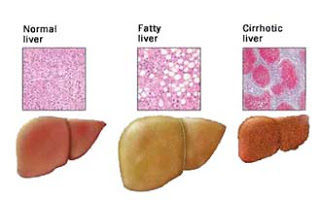Nonalcoholic fatty liver disease is a potential consequence of carrying excess body weight, and is essentially caused by extra fat being stored in the liver. It is the third most common cause of liver cirrhosis, and affects up to 30% of the world’s population.
Weight loss has been clearly established as the first line treatment for NAFLD, and we know that most successful weight loss strategies focus most attention on reducing calorie intake, with exercise playing only a minor part. However, we know that exercise can have many cardiometabolic benefits even if a person doesn’t lose weight because of it, so it would be interesting to know if exercise itself could improve NAFLD.
A study was recently published in
JAMA Internal Medicine which addresses this question.
In the study, 220 participants with NAFLD were randomly assigned to moderate exercise (brisk walking for 30 mins, 5 days per week) for a year, vigorous exercise for 6 months followed by moderate exercise for 6 months, or no additional exercise for a year.
They found that moderate and vigorous exercise were equally effective to reduce fat content in the liver, and that most (but not all) of the effect was mediated by weight loss.
So, while actual reduction in weight remains the key factor in improving fatty liver, exercise may play some role even if the exercise itself doesn’t shed a whole bunch of pounds. And it is good news that moderate activity is just as good as intense activity, as moderate exercise regimens like walking are more likely to be adhered to in the long run.
Follow me on twitter! @drsuepedersen












